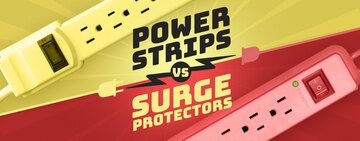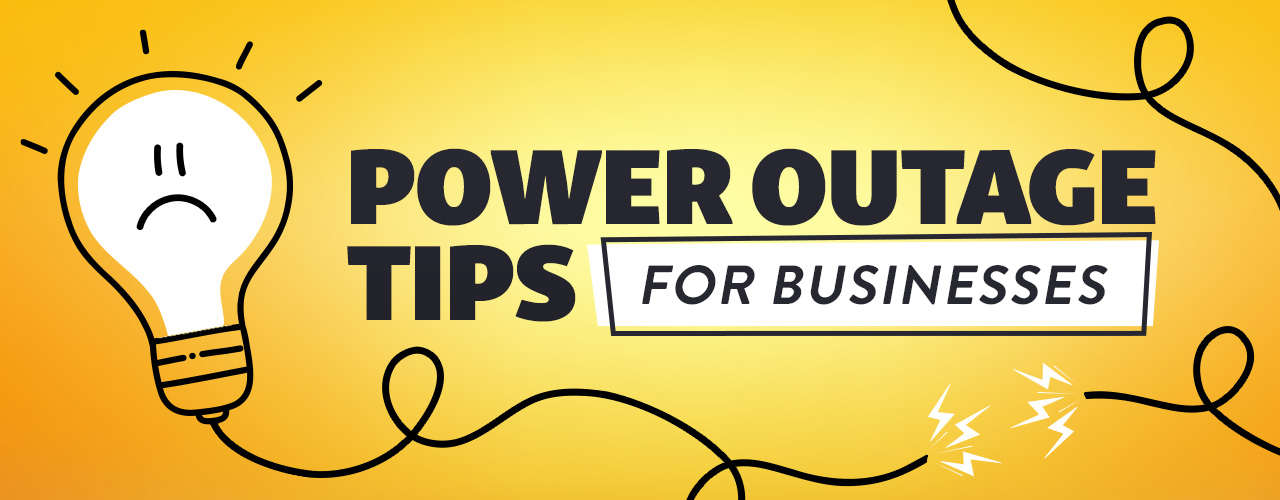
Power outages can strike at any time, disrupting the normal operations of businesses across various industries. From small local shops to large-scale manufacturing facilities, no establishment is exempt from the potential impact of a power outage. These disruptions can result in significant financial losses, compromised customer service, and even food safety hazards. Therefore, businesses must create well-defined power outage procedures to minimize the adverse effects during the outage and ensure a quick and efficient recovery.
Preparing for Power Outage
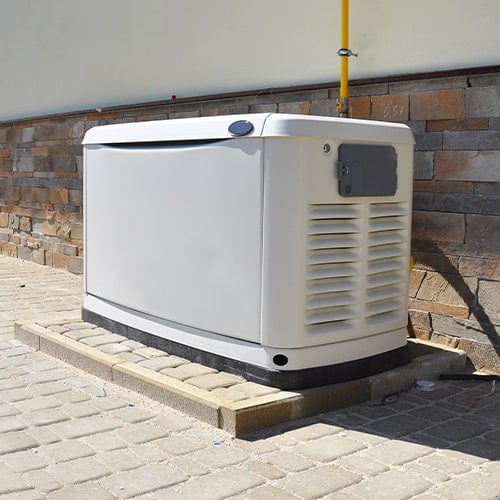
Though power outages are unpredictable, circumstances such as inclement weather, high power demand, and extensive construction projects increase the probability of power loss. Managers and business owners should monitor their area for signs of potential outages to get ahead of any emergencies. Regardless of whether an outage is predicted in your area, complete the following steps to prepare your business.
- Purchase a generator: A generator provides backup power to essential equipment and keeps your operation running smoothly until power returns.
- Create an emergency plan and train staff: By creating a detailed procedure for power outages and training staff to follow it, you minimize the potential for chaos and accidents. Furthermore, a plan ensures that crucial tasks are completed to save food or equipment.
- Set up emergency lighting: Emergency lighting operating on an independent power supply provides safety and security for guests and staff, reducing panic and increasing visibility.
- Install carbon monoxide detectors: Generators are one of the leading causes of carbon monoxide poisoning, which is caused by a colorless, odorless gas that can be deadly if inhaled in high concentrations. Carbon monoxide detectors will alert you if levels become dangerous, potentially saving the lives of your staff and customers.
- Stock up on flashlights and extra batteries: Having an ample supply of flashlights and extra batteries readily available provides essential lighting for employees and can be used to navigate through dark areas or during evacuation procedures.
- Print copies of plans and important documents: Since you can't access digital records during an outage, print key procedures and keep them somewhere easily accessible.
- Ensure all equipment has surge protection: When power returns, power surges can cause significant damage to your equipment. Connect all electric equipment to surge protectors to reduce this risk.
- Test equipment and backup power sources: Regularly test your generators, emergency lights, and other backup power sources to ensure they are in good working condition. These tests will help identify potential issues before an actual power outage occurs.
How to Prepare for Long-Term Power Outages
Heatwaves, snowstorms, and downed trees can all cause extended power outages, which might lead to loss of sales and supplies and cause a temporary closure of your business. However, a little preparation reduces the impact of long-term power outages on your business. Use the following guidelines to equip your business for a long-term loss of power.
- Relocate perishable food items and enact proper food storage procedures.
- Ensure your generator can handle sustained use, and only use it for the most essential items.
- Even if you intend to close your business, stock up on clean drinking water, non-perishable goods, and emergency supplies.
- Keep flashlights and battery-powered lights in an accessible area, and check that you have plenty of extra batteries.
- Unplug all non-essential equipment before closing your business.
- Use a battery-powered radio or a phone connected to a jack to communicate with emergency services.
What to Do during a Power Outage
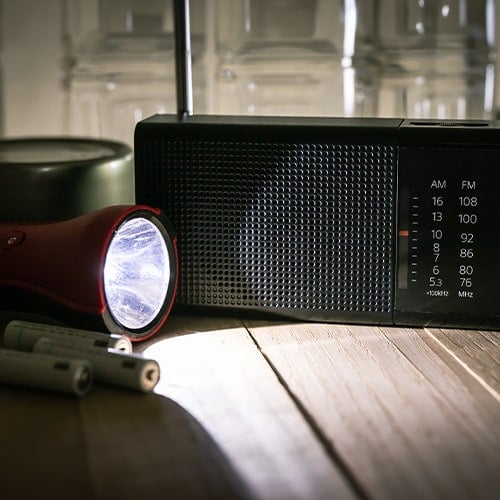
The first moments of a power outage can be frightening for staff and customers, but having an ironclad procedure can help reduce chaos and damage. Complete the following steps as soon as the power goes out to lessen its impact on your business.
- Unplug or turn off all equipment: To prevent damage from power surges or electrical issues when the power returns, unplug or turn off all equipment connected to the electrical system. Examples include computers, appliances, and machinery.
- Use backup or emergency power sources: Turn on your generator to maintain essential functions, such as emergency lighting or refrigeration. Prioritize systems based on the anticipated length of the outage.
- Contact your utility company to receive updates: Keeping in touch with your utility company will provide you with real-time updates on the power outage and estimated time for restoration. This information can help you plan accordingly and communicate with your staff and customers.
- Ensure employee and customer safety: In addition to removing hazards and safely evacuating the building, restaurants should dispose of any partially cooked food that hasn't reached a safe internal temperature.
- Follow emergency protocols: After training and practice, employees should know your emergency plan and immediately follow its steps. Actions include retrieving portable lights from storage and closing procedures.
- Check ventilation to ensure it is working: If you're using a generator or kitchen equipment, make sure your ventilation is still functioning. If not, turn off all equipment and the generator to prevent carbon monoxide poisoning.
- Inform staff and customers of closures: Depending on the nature of the outage and your operation, you might need to close your business temporarily. Communicate details to customers, including when you expect to reopen, and offer complementary services to offset the interruption.
What to Do during a Power Outage at Night
While power outages at night might not affect customers, they present a higher risk to your overall business. Many establishments are not open late at night, and a power outage in an empty building makes it impossible to save temperature-dependent supplies. Since no one will notice the outage until morning, set up safeguards to mitigate potential damage as much as possible.
A standby generator and surge protectors are the most crucial items to mitigate damage if the power goes out at night. When your business loses power, your standby generator will turn on automatically and power essential systems temporarily. If electricity returns during the same night, surge protectors will shield your equipment from harmful power surges.
After a Power Outage
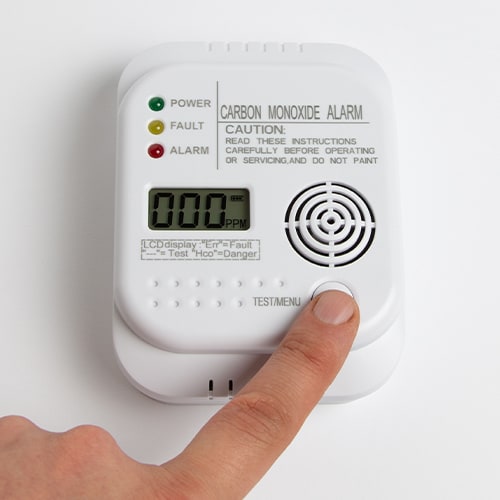
Your power outage procedure should not end once power is restored to your business. Take the following steps to ensure your business can resume safe operations promptly.
- Plug equipment back in: Wait 15 minutes, then plug all appliances into their sockets. Power up equipment to ensure everything works as expected.
- Take temperatures of TCS food: Time/temperature control foods have specific shelf lives, and the outage might make those items unsafe. Check the internal temperatures of these foods and the time spent in the temperature danger zone before using them.
- Throw out all unsafe food: Dispose of all food items at unsafe temperatures, and remove any food contaminated by dripping juices from thawed meat. Proper refrigerator stocking procedures should mitigate the loss of these items.
- Check your establishment and equipment for damage: Look for broken windows, leaks, or other structural issues that may have occurred during the outage, especially if a storm caused the outage. Assess your equipment for damage or malfunctions caused by the sudden power loss.
- Review and prepare for the next outage: Get feedback from staff and customers about your emergency plan, then make adjustments accordingly.
Power Outage Tips

As you prepare for a power outage, keep the following tips in mind to increase the safety of your staff and guests.
- Keep refrigerators and freezers closed to maintain the chilled temperature and hold cold foods safely for longer periods.
- Install your generator outdoors and away from windows to ensure proper ventilation and reduce the risk of carbon monoxide poisoning.
- Follow food storage procedures to prevent cross-contamination as food thaws. Keep frozen meats on the bottom shelf so they don't taint other items.
- Track the start and end of the outage for food safety, especially if you have an abundance of TCS foods.
- Stock up on backup batteries for phones and necessary equipment.
- Post key phone numbers, such as emergency services and the power company, on a piece of paper and keep it somewhere accessible.
- Regularly test your carbon monoxide detectors and replace batteries as necessary.
- Set aside funds in your budget to cover expenses that occur during an outage. This forethought might help reduce the financial hit from lost business and spoiled supplies.
- Consider adding smart kitchen equipment to your restaurant. This advanced technology, such as VersaHub smart equipment, allows for remote monitoring and can alert owners if the power goes out.
Power outages can significantly impact businesses, disrupting operations and causing potential financial losses. When the power goes out, essential equipment becomes inoperable, leading to food spoilage, data loss, unsafe working conditions, and even temporary closures. Therefore, creating extensive emergency procedures, such as unplugging electronics and purchasing a generator, prepares your business to face power outages and minimize their impact on your operation.





